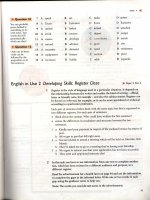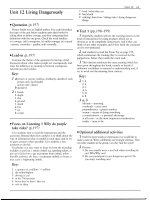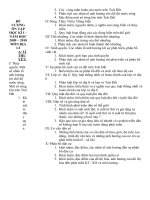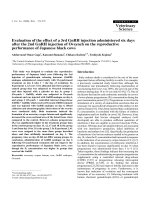aaaaa
Bạn đang xem bản rút gọn của tài liệu. Xem và tải ngay bản đầy đủ của tài liệu tại đây (211.07 KB, 2 trang )
<span class='text_page_counter'>(1)</span><div class='page_container' data-page=1>
The 2011 earthquake off the Pacific coast of Tōhoku (東北地方太平洋沖地震,
Tōhoku-chihō Taiheiyō Oki Jishin?) was a magnitude ᄃ 9.0 (Mw) undersea ᄃ megathrust
earthquake ᄃ off the coast of Japan ᄃ that occurred at 14:46 JST ᄃ (05:46 UTC ᄃ) on Friday
11 March 2011,[2] [3] [8] with the epicentre ᄃ approximately 70 kilometres (43 mi) east of
the Oshika Peninsula ᄃ of Tōhoku ᄃ and the hypocenter ᄃ at an underwater depth of
approximately 30 km (19 mi).[2] [9] The earthquake is also often referred to in Japan as
the Great East Japan earthquake (東日本大震災, Higashi nihon daishinsai?)[10] [11] [12]
[fn 1] and also known as the 2011 Tohoku earthquake,[26] and the 3.11 earthquake. It
was the most powerful earthquake ever recorded to have hit Japan ᄃ, and the fourth most
powerful earthquake in the world ᄃ since modern record-keeping began in 1900.[8] [27]
[28] The earthquake triggered powerful tsunami ᄃ waves that reached heights of up to
40.5 metres (133 ft) in Miyako ᄃ in Tōhoku's Iwate Prefecture ᄃ,[29] [30] and which, in the
Sendai ᄃ area, travelled up to 10 km (6 mi) inland.[31] The earthquake moved Honshu ᄃ
(the main island of Japan) 2.4 m (8 ft) east, shifted the Earth on its axis by estimates of
between 10 cm (4 in) and 25 cm (10 in),[32] [33] [34] and generated sound waves detected
by the low-orbiting GOCE ᄃ satellite.[35]
On 10 March 2015, a Japanese National Police Agency ᄃ report confirmed 15,894 deaths,
[36] 6,152 injured,[37] and 2,562 people missing[38] across twenty prefectures ᄃ, as well
as 228,863 people living away from their home in either temporary housing or due to
permanent relocation.[39] A 10 February 2014 agency report listed 127,290 buildings
totally collapsed, with a further 272,788 buildings 'half collapsed', and another 747,989
buildings partially damaged.[40] The earthquake and tsunami also caused extensive and
severe structural damage in north-eastern Japan, including heavy damage to roads and
railways as well as fires in many areas, and a dam collapse.[31] [41] Japanese Prime
Minister ᄃ Naoto Kan ᄃ said, "In the 65 years after the end of World War II, this is the
toughest and the most difficult crisis for Japan."[42] Around 4.4 million households in
northeastern Japan were left without electricity and 1.5 million without water.[43]
The tsunami caused nuclear accidents ᄃ, primarily the level 7 ᄃ meltdowns ᄃ at three
reactors in the Fukushima Daiichi Nuclear Power Plant ᄃ complex, and the associated
evacuation zones affecting hundreds of thousands of residents.[44] [45] Many electrical
generators were taken down, and at least three nuclear reactors suffered explosions ᄃ due
to hydrogen gas that had built up within their outer containment buildings after cooling
system failure resulting from the loss of electrical power. Residents within a 20 km (12
mi) radius of the Fukushima Daiichi Nuclear Power Plant and a 10 km (6.2 mi) radius of
the Fukushima Daini Nuclear Power Plant ᄃ were evacuated.
</div>
<span class='text_page_counter'>(2)</span><div class='page_container' data-page=2></div>
<!--links-->
<a href=' />
<a href=' /><a href=' /><a href=' /><a href=' />









